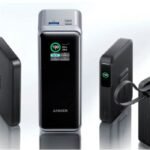A client calls with a simple billing question. Instead of a quick solution, they are transferred to the wrong team. The issue must be explained again. The call is placed on hold. Another transfer follows.
Inside the company, a message appears in chat: “Who can handle this?” Minutes pass, and frustration builds.
This is more than a minor service issue. It is a critical failure that erodes trust at every step. Customers feel ignored and turn to alternatives.
Internal teams lose focus and valuable time. Productivity falls while morale suffers. The impact is clear. Inefficient call handling weakens loyalty and drains resources. Lost time and poor workflows reduce business performance.
This problem is not inevitable. It reflects outdated systems that can be transformed. Smart call routing and efficient team workflows deliver the right expert first time.
Teams then focus on solving problems. Communication shifts from a strateBoosting gic liability into a driver of growth.
The True Cost of Inefficient Call Handling
It is impossible to discuss solutions without first diagnosing the actual cost of a fragmented communication system. The consequences of this extend well beyond inconvenience; it has a multi-level tap drain that impacts not only customers but also your agents and the overall performance of your operations.
I. The Customer Drain: A Direct Path to ChurnThe most visible cost of poor call handling is the loss of customer loyalty. In today’s crowded market, patience is short and competitors are just a click away. When a customer’s time is wasted, they feel their business is undervalued, a frustration that acts as a direct trigger for churn.
The research highlights the risk. Zendesk reports that 61% of customers would switch after just one poor service experience, while Microsoft found that 96% of consumers consider service a critical factor in brand loyalty. Every misdirected call and each moment on hold becomes a high-stakes gamble with customer trust.
II. The Agent Drain: Wasting Your Most Valuable Asset
While customers grow frustrated, the internal impact is equally damaging. Agents, who should be focused on solving problems and building relationships, are forced to cover gaps in broken processes.
They spend their days apologising for delays, chasing colleagues for information, and repeating the same steps across multiple calls. The wasted time adds up with alarming speed. Losing three minutes on each call and 30 calls in a day, it will mean 90 minutes of lost productivity.
In case of a group of ten agents, it results in over 15 hours of paid, ineffective time every day. This is a cost that is not overt but contributes to burnout and inflation of hiring. An aggrieved employee inevitably walks out the door.
III. The Operational Drain: Systemic Bottlenecks and Siloed Knowledge
The combined effect of this friction weakens the organisation as a whole. Manual transfers and missing context slow progress and create fragile, inefficient operations.
- Bottlenecks: By having one expert available, workflows would be halted whenever he/she is busy, which introduces delays to both customers and employees.
- Siloed Knowledge: Knowledge is not shared in a common system but is stuck in individual memories. As employees leave, they take with them their own experience.
- Turnover Pressure: Pressure of continuous inefficiency leads to an increase in turnover, putting it under a compulsion to continually invest in recruitment and training.
Ultimately, inefficient call handling is not just a customer service flaw. It is a strategic weakness that restricts growth and prevents the delivery of consistent, professional experiences that modern markets demand.
Smart Call Routing
To solve the problems of inefficient call handling, businesses need a system that is intelligent, automated, and immediate. This is the role of smart call routing. It is an automated process that directs calls to the most qualified person or team based on set criteria.
Think of it as a digital triage nurse. In a hospital, a nurse quickly assesses needs and sends patients to the right specialist. This saves time and improves outcomes.
Smart call routing works the same way in business. It identifies caller intent and connects them to the right expert on the first attempt. This removes manual guesswork and avoids transfers that waste time and damage productivity.
1. Skills-Based Routing
A routing method that matches a customer’s need with an agent’s documented expertise. This can include language fluency, technical knowledge, or product specialisation.
A customer with a query about enterprise software integration is routed past junior staff and connected directly to a Tier-2 specialist.
This raises First Call Resolution. Customers receive the right help faster. Agents avoid repeated escalations. Team capacity is freed for more complex issues.
2. Time-Based Routing
A system that manages call flows based on hours of operation, public holidays, or caller time zones.
A call made at 8 PM can be directed to an after-hours grouping, an international office, or a voicemail message resulting in a ticket.
This provides all-day and all-night coverage that is not supervised by hand. None of the calls is lost. Lead protection becomes ensured. Overnight teams have an established queue of cases to be followed up on.
3. Modern Interactive Voice Response (IVR)
The modern IVR uses natural language to identify intent and gather information before connecting to an agent.
A caller says, “I have a question about my invoice.” The IVR understands, requests the account number, and passes that context to the agent before connection.
The ability to manage multiple calls at once ensures agents spend less time on repetition and more time on resolution.
Customers avoid repeating themselves. Agents start with full context. Call handling time is reduced. The overall customer experience improves.
Team Workflows That Make Technology Work
Simply efficient routing of calls is, of course, a welcome and strong start but technologies are no good panacea to solve long-term productivity dilemmas. Even the most adept systems, without a set of human workflows to aid them, establish new obstacles.
Smart routing is the vehicle, but your team workflows provide the roadmap. To be effective, processes must guide the technology so every call reaches the right resolution.
A. Centralised Knowledge Base
A centralised knowledge base is a shared digital library containing product details, troubleshooting steps, and policy guides. It removes reliance on individual memory and creates a foundation for consistency.
When a call about Product X billing is routed to a billing expert, the agent can instantly open the official Product X guide. As a result, customers receive fast, accurate, and pre-approved information every time.
The impact: Knowledge silos disappear. Agents spend less time searching for answers. Each customer receives the same reliable and professional response.
B. Clear Escalation Paths
Not every issue can be solved by the first agent. Clear escalation paths define when and how a call should move to another level of expertise. The focus is on warm transfers, not cold handoffs.
An agent provides the next specialist with information about the problem the customer faces, his or her account, and the action already taken before the transfer. They subsequently familiarize the customer with the new agent with grace.
The impact: Customers avoid repeating themselves. Calls resolve faster. The team shows seamless coordination. Complex cases stop being passed around without ownership.
C. Integrated Communication Tools
The most effective teams work within an integrated ecosystem where tools connect. This includes linking the CRM, VoIP phone system, and internal chat. Computer Telephone Integration (CTI) gives you Complete Context as soon as a call hits the phone.
When an established customer’s phone rings, their record, open tickets, and past purchases will show on the agent´s screen before they answer.
The impact: Agents provide highly personalised service with less effort. Manual searches are eliminated. Errors are reduced. Calls become informed, productive conversations instead of repetitive exchanges.
When drafting these workflows, companies eliminate silos and minimize mistakes, as well as enabling their agents. Teams shift their focus to provide the most reactive support to implement a proactive communication strategy that delivers consistent and professional communication nearly every time.
Synergy in Action: A Tale of Two Calls
The power of smart call routing with strong workflows becomes clear when you see the contrast. A single customer query shows the difference between outdated systems and an integrated approach.
Before: The Spiral of Frustration
A high-value client calls with a billing dispute. The call lands in a general queue. After two minutes on hold, a Tier-1 agent answers but cannot resolve billing disputes.
The agent puts the client on hold and does a cold transfer to the billing department. The new agent will require the client to confirm details once more and elaborate on the problem of the initial stage.
They cannot find the right product contract and need to escalate to a manager. The manager is unavailable. The client is promised a callback.
- Total time spent: 25 minutes.
- Customer experience: Anger, demotivated, distrust.
- Internal impact: Three employees involved, duplicated effort, account is at risk.
After: A Streamlined Resolution
The same client calls again. The modern IVR recognises their number, identifies them in the CRM, and asks for the reason. The client says, “I have a question about my last invoice.”
The skills-based routing system bypasses the general queue and directs the call to Sarah, a senior billing specialist with expertise in that product. As the call connects, CTI integration opens the client’s profile on Sarah’s screen, including their contract and payment history.
Sarah greets the client by name and says, “I see you’re calling about your invoice from last month. I have the details here. Let’s walk through it.”
- Total time spent: 6 minutes.
- Customer experience: Simple, personal, hassle-free.
- Internal impact: One employee involved, zero wasted time, relationship strengthened.
This contrast shows the synergy of smart routing and strong workflows. It transforms frustration into resolution. It builds customer loyalty and increases team efficiency.
Conclusion
Inefficiency in calls leads to wastage of resources and loss of trust; however, the issue can be resolved. When smart call routing is combined with well-organized, human-based workflows, the organization can solve issues at higher speeds, waste less time, and create better customer experiences.
This is not only a technical solution. It is a strategic change in the dynamics of teamwork and value generation. Politech Engineering companies that implement this integrated approach move away from considering communication as a cost centre by turning it into a productivity driver, establishing a secure base to achieve efficiency, loyalty, and sustainable growth.









